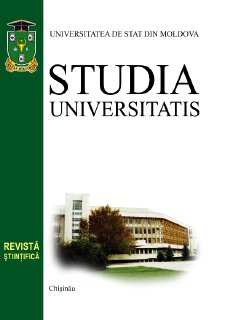COPPER(II) COORDINATION COMPOUNDS WITH 2-ACETYLPYRIDINE N4-(BICYCLO[2.2.1]HEPTAN-2-YL)THIOSEMICARBAZONE AS POTENTIAL ANTIBACTERIAL AGENTS
Vasilii GRAUR , Ianina GRAUR, Aurelian GULEA Laboratory of Advanced Materials in Biopharmaceutics, State University of Moldova Iulia TELEUCĂ ,,Orizont” High School, Durlești, Chișinău Carolina LOZAN-TÎRȘU, Greta BĂLAN Department of Preventive Medicine, ,,Nicolae Testemitanu” State University of Medicine and Pharmacy
Abstract
The paper presents the synthesis of the new 2-acetylpyridine N4-(bicyclo[2.2.1]hept-2-yl)thiosemicarbazone (HL) and its three copper(II) coordination compounds: [Cu(L)X] (X = NO3- (I), Cl- (II), CHCl2COO- (III)). The obtained compounds were studied by NMR and FTIR spectroscopies, elemental analysis, and molar electric conductibility. The antibacterial activity towards Gram-positive (Staphylococcus aureus, Bacillus cereus) and Gram-negative (Escherichia coli, Acinetobacter baumannii) standard strains was studied for the HL and complexes I-III. The coordination of the HL to the copper(II) atom leads to the increase of activity against almost all microorganisms. Complex I is the most active one towards Gram-positive microorganisms, while complex III is the most active one towards Gram-negative microorganisms. They in many cases surpass the activity of Furacillinum and are practically on the same level as Tetracycline towards Gram-positive microorganisms.
Keywords: thiosemicarbazones, coordination compounds, copper, antibacterial activity.


